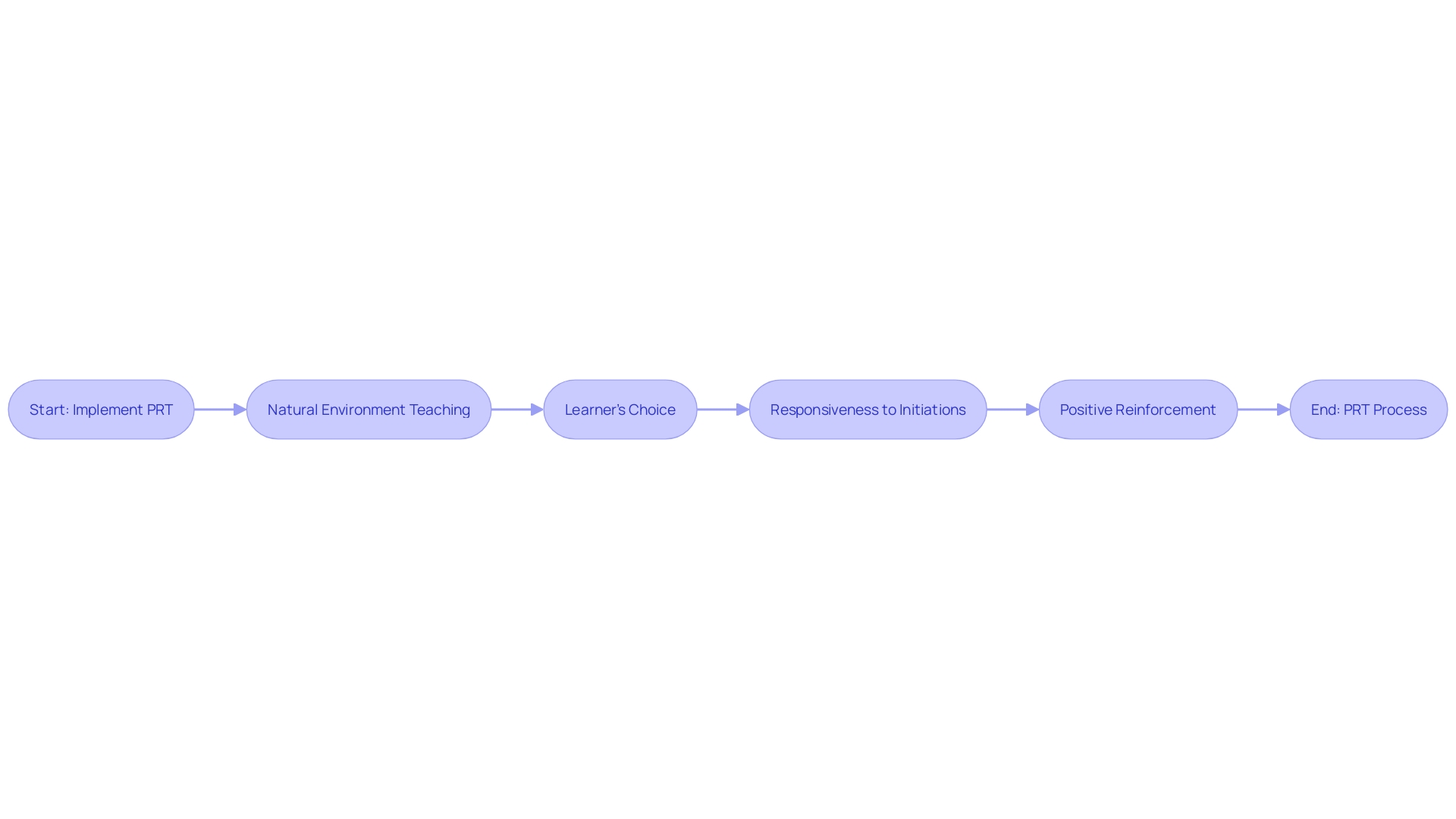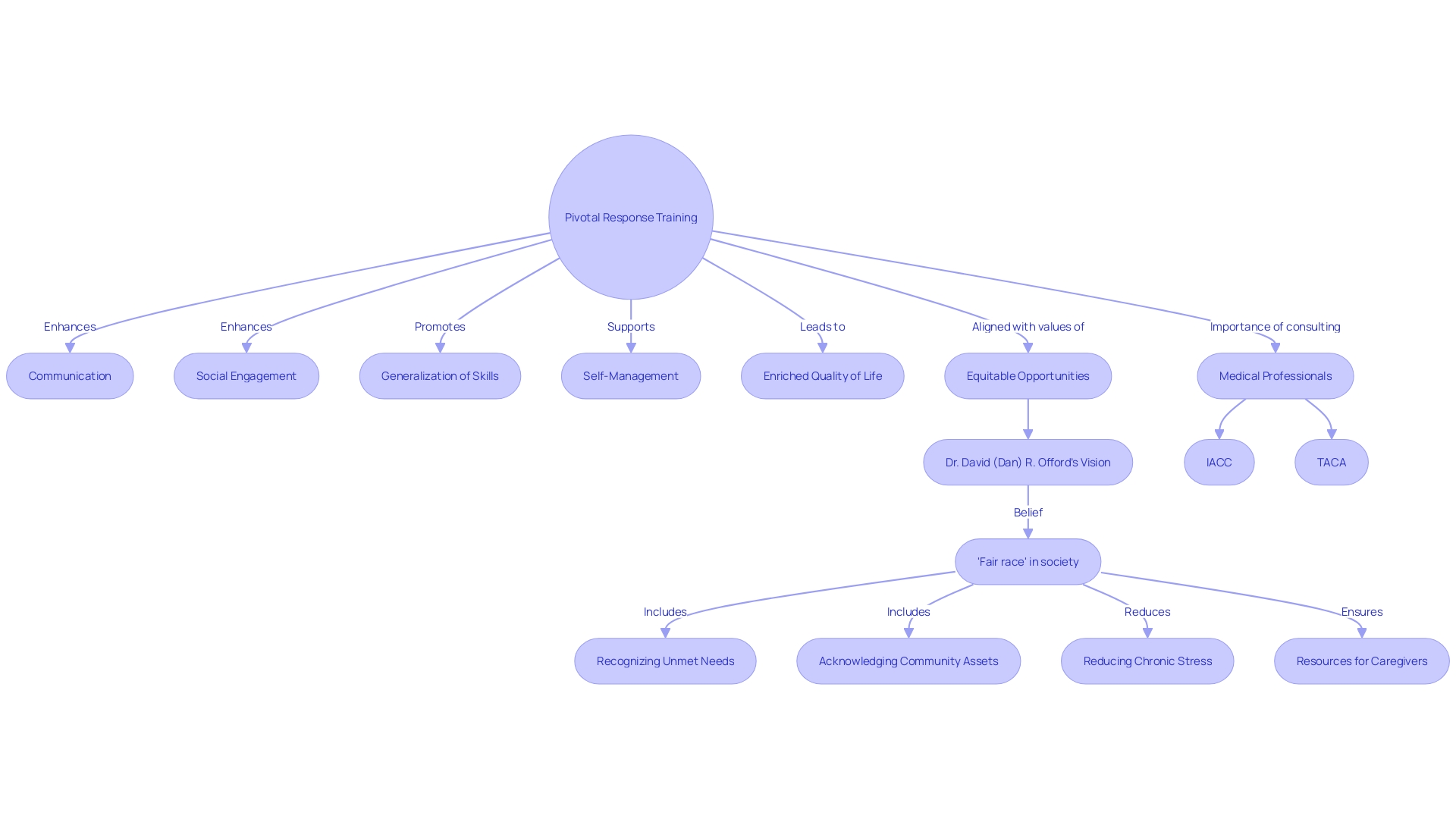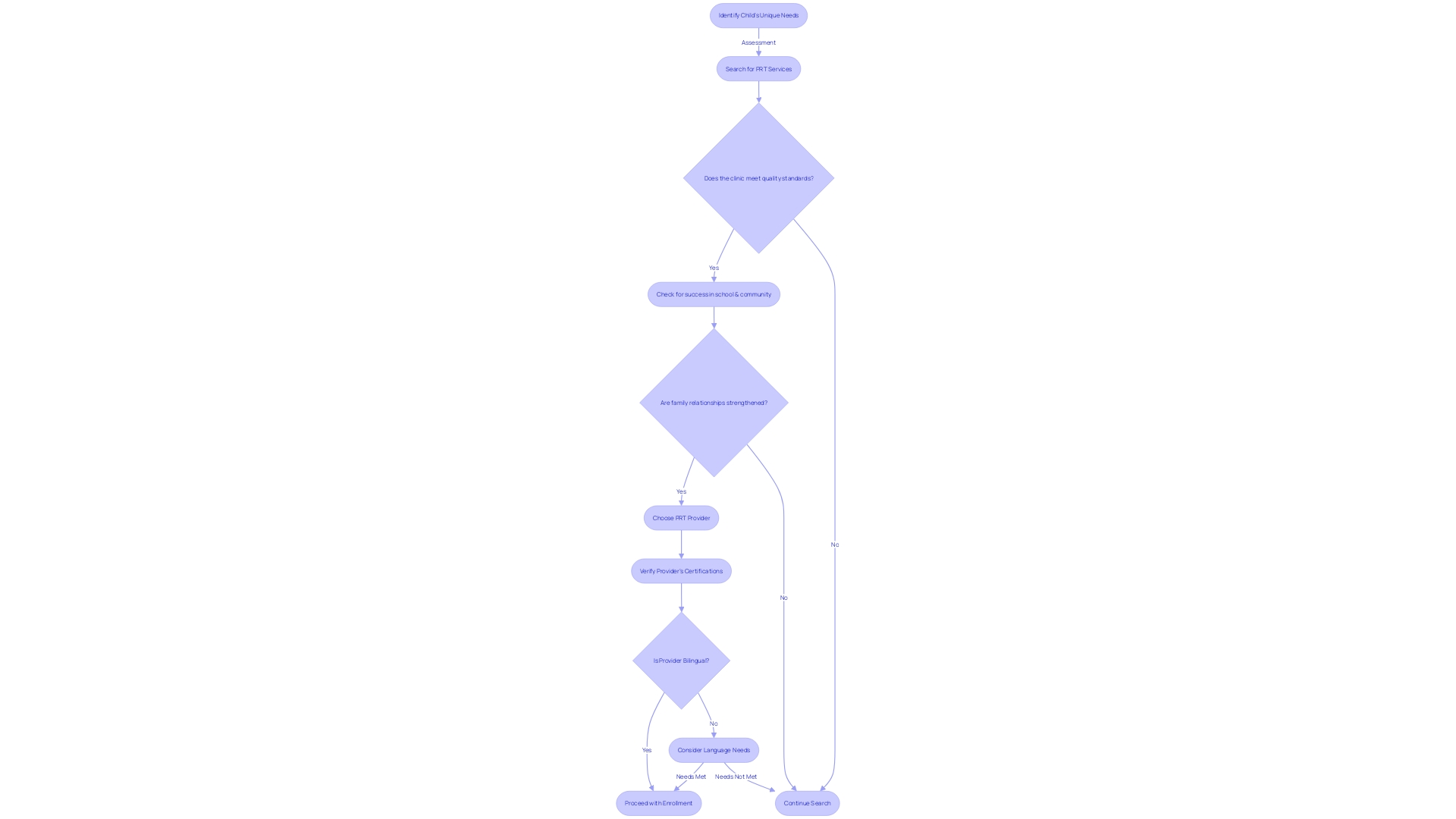Introduction
Pivotal Response Training (PRT) is a child-centered and dynamic intervention designed to enrich the developmental trajectory of individuals with autism spectrum disorder (ASD) and other developmental disabilities. By focusing on key developmental areas, PRT enhances essential communication, social engagement, and behavioral skills. The approach is rooted in the belief that supporting active participation across various life domains is crucial for mental health and serves as a foundation for equitable opportunities.
In this article, we will explore the key principles of PRT, the four pivotal areas it focuses on, how PRT sessions work, the benefits of PRT, the evidence supporting its effectiveness, who provides PRT services, and how to find these services for your child. Join us as we delve into the transformative world of Pivotal Response Training, empowering parents and caregivers to navigate challenges and ensure the well-being of their children.
What is Pivotal Response Training?
Pivotal Response Training (PRT) is a child-centered and Dynamic Intervention designed to enrich the developmental trajectory of individuals with autism spectrum disorder (ASD) and other developmental disabilities. By focusing on key developmental areas, PRT enhances essential communication, social engagement, and behavioral skills. The approach is rooted in the belief that supporting active participation across various life domains is crucial for mental health and serves as a foundation for equitable opportunities. PRT highlights the significance of acknowledging the distinct requirements and capabilities of every individual, minimizing ongoing stressors, and equipping caregivers with the essential resources to nurture the growth of the individual and the overall well-being of the family. This approach not only caters to the young one's immediate requirements but also contributes to a more equitable, all-encompassing society where every youngster, including those with supplementary difficulties, can flourish and engage actively in their communities.
Key Principles of PRT
Pivotal Response Training (PRT) is a transformative approach that assists individuals with Autism Spectrum Disorder (ASD) in enhancing pivotal skills crucial for their overall development. The effectiveness of PRT is underpinned by its adherence to several foundational principles.
-
Natural Environment Teaching: PRT sessions are conducted within natural settings like the home or community environments. This approach promotes the transfer of skills across different situations, enhancing the individual's capability to apply what they learn in real-life contexts.
-
Learner's Choice: Emphasizing the individual's autonomy, PRT incorporates the individual's preferences in selecting activities and materials. This principle is instrumental in boosting their motivation and active participation during the intervention process.
Responsiveness to Initiations: Recognizing and promptly reacting to a young individual's attempts to communicate is a cornerstone of PRT. This responsiveness encourages the individual to initiate interactions more frequently, thereby nurturing their communication and social skills.
- Positive Reinforcement: Employing positive reinforcement is a key aspect of PRT. By rewarding desired behaviors, young individuals are more likely to repeat them, leading to a positive reinforcement of these behaviors.
Real-world applications of these principles are evident in initiatives like the collaboration between Emirates, Dubai International Airport, and local educational bodies to improve travel experiences for neurodivergent individuals. By offering rehearsal flying experiences, they address the need for familiarization with new environments, a concept aligned with PRT's natural environment teaching.
Moreover, Dr. David (Dan) R. Offord's focus on equity and mental health for individuals with disabilities resonates with PRT's goals. Ensuring that children with ASD have assistance and opportunities for engagement in their communities is vital for their well-being and development. As research indicates, only approximately 30% of working age autistic individuals are employed, which underscores the significance of interventions like PRT that can foster pivotal skills and promote inclusion in various life domains.
In summary, PRT's principles are not just theoretical; they are actively at work, shaping interventions and support systems that aim to create fair and supportive environments for those with ASD. These principles align with community priorities, and by incorporating them, we can pave the way for more inclusive and equitable participation for children and youth with disabilities.

The 4 Pivotal Areas of PRT
Pivotal Response Training (PRT) is a transformative approach to assisting children with autism, providing them with tools to flourish by concentrating on enhancing pivotal learning skills. One of the main goals is to enhance motivation, utilizing a young individual's innate interests to cultivate a strong inclination to learn and engage in activities. Another crucial goal is to foster the initiation of social interactions in young individuals, which is vital for their ability to start and sustain conversations and relationships with others.
PRT also works on developing the capacity of a young person to respond to multiple cues, which is essential for adapting to the varied demands of daily life and enhancing their learning experiences. Moreover, self-control is a vital aspect of concentration, empowering youngsters to autonomously manage their conduct and emotions. This self-regulation is crucial for their sense of autonomy and success in various settings, such as at home and in school.
Considering the statements made by Dr. David (Dan) R. Offord, 'I do not mind if my offspring are in a race as long as the race is fair,' PRT aims to equalize the playing field for individuals with autism. By addressing their unmet needs and leveraging their unique strengths, this approach works toward creating a fair race where individuals with autism can engage peacefully and meaningfully in their communities, reducing stressors and aiding their mental health.
Caregivers are provided with the assistance they require to foster the growth of their offspring successfully. Such support is echoed by the Division of Behavioral and Social Sciences and Education, which emphasizes the importance of informed public opinion and sound policies in enhancing the well-being of young individuals. Through PRT and the collective efforts of caregivers and professionals, autistic individuals are positioned to overcome challenges and achieve equitable opportunities for growth and social participation.
How PRT Sessions Work
Pivotal Response Training (PART) is a dynamic and collaborative method designed to enhance the development of individuals with autism. At its core, PART concentrates on personalized objectives that encourage crucial areas of a young person's development, such as motivation and the capacity to initiate communication. By engaging meaningful activities that resonate with an individual's interests, therapists and parents work together to set personalized goals. The process is rich with natural reinforcers, making learning enjoyable and directly relevant to the young one's world.
During PRT sessions, strategic prompting guides the individual, which is then carefully tapered off, fostering a path to independence. The therapist meticulously records data to track progress and fine-tune interventions, ensuring that each step taken is informed and purposeful.
Most crucially, parents are integral to the therapy's success. They are equipped with the strategies and know-how to extend the learning beyond the therapy sessions, weaving it into the fabric of everyday life. This not only promotes uniformity but also strengthens the family as a whole, contributing to the mental well-being of the young one and the overall welfare of the family.
By following these principles, PRT embraces the ethos of providing fair assistance to individuals with autism, as emphasized by the respected Dr. David (Dan) R. Offord, who advocated for equal and engaged involvement for individuals with disabilities across all aspects of life. The ultimate objective of PRT is to ensure 'the competition equitable,' so to say, by acknowledging the distinct requirements and capabilities of every individual, decreasing sources of pressure, and guaranteeing strong assistance networks for caregivers and parents, in line with the belief that all youngsters merit the chance to flourish within their communities and beyond.
Benefits of PRT
Pivotal Response Training (PRT) is an intervention that brings transformative advantages to individuals with Autism Spectrum Disorder (ASD) and their families. It enhances communication, both expressive and receptive, allowing for more robust interactions and connections with the world. PRT also focuses on social engagement, empowering individuals with ASD to forge meaningful relationships and navigate social environments with greater ease. A critical aspect of Parts its emphasis on the generalization of skills, ensuring that what is learned in one setting can be applied to various contexts, supporting long-term success. Additionally, PRT nurtures self-management skills, paving the way for greater autonomy and independent decision-making. This multifaceted approach ultimately contributes to an enriched quality of life, fostering independence and minimizing challenging behaviors.
The philosophy underlying PRT aligns with the ideals expressed by Dr. David (Dan) R. Offord, who valued equitable opportunities for all individuals, including those with disabilities. Such interventions are essential for mental health and societal equity, guaranteeing that every young individual, regardless of their challenges, has access to the support they need for healthy development. By reducing stress and bolstering the resources available to caregivers, PRT is a step towards making 'the race fair' for individuals with ASD, particularly those who also face emotional and behavior problems, who are at a high risk of social exclusion.
As we navigate the complexities of autism, it is paramount to consult with medical professionals and consider the guidance of advisory bodies like the IACC, which coordinates efforts across various federal agencies and stakeholders. Their work, informed by diverse perspectives, aims to maximize positive outcomes for individuals on the spectrum. The Autism Community in Action (TACA) furthers this goal by offering insights into effective therapies, emphasizing the importance of informed decision-making in consultation with healthcare providers.

Evidence Supporting PRT
Empirical research strongly supports Pivotal Response Training (PRT) as a transformative method for individuals with Autism Spectrum Disorder (ASD). Studies consistently show enhancements in crucial developmental domains: communication, social engagement, and adaptive behavior. These enhancements are not only clinical observations but are avenues to a fairer, more equitable race in life for these individuals. As children with ASD and their families strive for normalcy in schools, homes, and social settings, PRT stands out as a beacon of hope, offering strategies that align with Dr. David (Dan) R. Offord's vision of equity—where every individual, regardless of their challenges, has a fighting chance at success and well-being. The IACC's efforts to propel research on autism forward resonate with these findings, emphasizing the significance of coordinated, evidence-based interventions like PRT in fostering inclusivity and support for children on the autism spectrum, especially those facing additional emotional and behavioral challenges.
Who Provides PRT Services?
Pivotal Response Training (PRT) is delivered by a team of professionals with a strong background in Applied Behavior Analysis (ABA) and Autism Spectrum Disorder (ASD). This team may be composed of behavior analysts, speech-language pathologists, occupational therapists, and special education experts. Their combined expertise and specialized PRT training are essential for achieving positive outcomes for children with developmental disorder. The landscape of therapy for individuals with developmental disorders, including PRT, is evolving with the rising demand for services and the need for flexible models of care. As reported by Doreen Granpeesheh, CEO and founder of the Center for Autism and Related Disorders, a shift towards more adaptable work models for therapists has led to improved recruitment and retention, which is essential for delivering consistent, high-quality PRT services.
Data demonstrate a significant rise in the diagnosis of developmental disorder, from 1 in 2,500 to 1 in 36, as indicated by Dr. Jan Blacher, a research professor of education and psychology at UC Riverside. This surge highlights the importance of implementing a variety of interventions like PRT that can address the diverse needs of individuals on the spectrum. PRT's emphasis on naturalistic teaching and leveraging a young individual's interests aligns with the growing understanding that autism presentations are varied and require personalized approaches.
Innovation in therapy access is also critical. The high cost and lengthy waitlists for traditional therapy services, which can reach $250 per hour and 6 to 12 months respectively, highlight the importance of accessible alternatives. Virtual reality activities, like those developed by Pragmatica, offer a way for individuals to practice communication skills at home, providing immediate, cost-effective intervention options that can supplement professional PRT services.
The Kevin and Avonte Program's focus on addressing severe behaviors such as wandering, with grants for community initiatives, is an example of targeted interventions that can be part of a broader PRT strategy. The program's success in enhancing public awareness and establishing community partnerships demonstrates the potential impact of specialized approaches within the realm of therapy for individuals with autism.
It is vital to offer comprehensive services for individuals with autism, as the well-being of these young ones is a determining factor in achieving mental health equity, as emphasized by child psychiatrist Dr. David (Dan) R. Offord. The PRT practitioners' role in promoting equitable and supportive environments for children on the autism spectrum is crucial in guaranteeing their meaningful engagement in society and the reduction of stress for their families. This comprehensive approach to therapy not only tackles the immediate challenges of autism but also contributes to the long-term mental health and equity for individuals with disabilities.
Finding PRT Services
Starting the journey to find PRT services for your little one can be a transformative step towards enhancing their growth and well-being. Here's a streamlined approach to locate the right PRT services for your child's unique needs:
-
Initiate In-depth Research: Begin by deepening your understanding of PRT. Seek out professionals with a proven track record in PRT, ensuring they possess the necessary experience and expertise.
-
Gather Recommendations: Leverage the collective knowledge of your community. Reach out to other parents, therapists, and professionals who can provide insights into the PRT services available in your area.
-
Connect with Local Resources: Get in touch with local autism organizations or support groups. They often have current information on PRT services and can guide you towards appropriate providers.
-
Consult with Experts: Arrange meetings with potential PRT providers to discuss your offspring's individual needs and goals. This is an opportunity to comprehend their approach and how it aligns with your offspring's needs.
-
Evaluate Compatibility: The connection between your offspring and their therapist is crucial. Evaluate the dynamic to ensure it fosters a positive and effective therapeutic environment.
-
Consider Financial Aspects: Understand the financial implications of PRT services. Explore insurance coverage, grants, or other funding sources to support therapy for your offspring.
-
Start the treatment: After choosing an appropriate PRT provider, work together with them to create a customized intervention plan, paving the way for your youngster to start benefiting from PRT services.
Remember, staying informed and proactive in your kid's therapy choices is critical for their success. As such, continuously educate yourself on the latest findings and therapeutic approaches. The Los Angeles County Department of Mental Health, for instance, is dedicated to offering quality, strength-based mental health services to young individuals, focusing on achievement at school and in the community. Furthermore, take into account the broader network of assistance, like the Kevin and Avonte Program, that aids in averting instances of wandering among children with developmental difficulties by providing funding to local initiatives for education and emergency response preparation.
In the quest to provide your offspring with the best possible support, always keep in mind the words of Dr. David (Dan) R. Offord: 'I do not mind if my offspring are in a race as long as the race is fair.' Strive to ensure that your child has a fair opportunity to thrive and participate meaningfully in all aspects of life.

Conclusion
In conclusion, Pivotal Response Training (PRT) is a child-centered intervention that enhances communication, social engagement, and behavioral skills for individuals with autism spectrum disorder (ASD) and other developmental disabilities. PRT focuses on key developmental areas, promoting active participation and equitable opportunities. Its principles, such as natural environment teaching, learner's choice, responsiveness to initiations, and positive reinforcement, shape interventions and create supportive environments for children with ASD.
PRT targets four pivotal areas: motivation, social interactions, response to cues, and self-management. By addressing these areas, PRT aims to reduce stress, support mental health, and foster independence. Parent involvement is crucial, as they learn strategies to extend learning beyond therapy sessions and support the family's overall well-being.
The benefits of PRT are transformative, enhancing communication, social engagement, adaptive behavior, and self-management skills. It aligns with the vision of equity and mental health for all children, ensuring access to support for healthy development.
Empirical research strongly supports the effectiveness of PRT, showing improvements in communication, social engagement, and adaptive behavior. PRT offers hope and strategies that align with the vision of equity and well-being.
PRT services are provided by professionals with expertise in Applied Behavior Analysis (ABA) and ASD. Flexible models of care and accessible alternatives to traditional therapy services are evolving to meet the rising demand for services.
Finding PRT services involves research, gathering recommendations, connecting with local resources, consulting with experts, assessing compatibility, and considering financial aspects. Staying informed and proactive in your child's therapy choices is critical for their success.
In the quest to provide your child with the best support, remember Dr. David (Dan) R. Offord's words: "I do not mind if my children are in a race as long as the race is fair." Strive for a fair opportunity for your child to thrive and participate meaningfully in all aspects of life.




